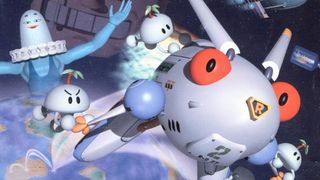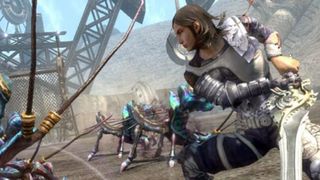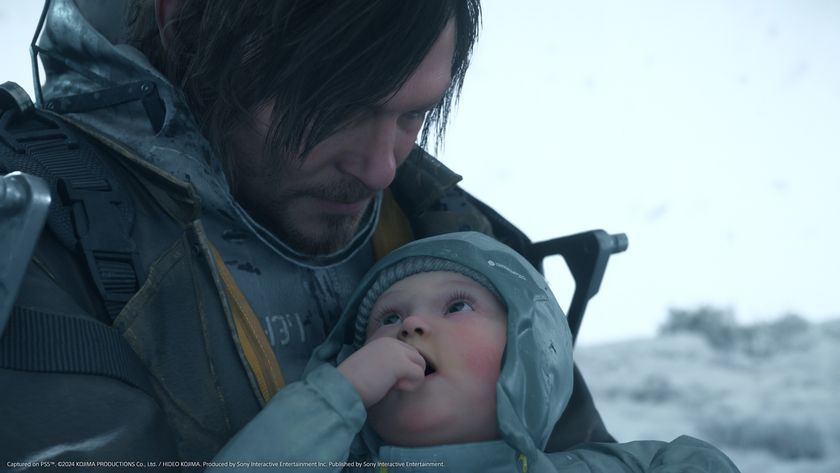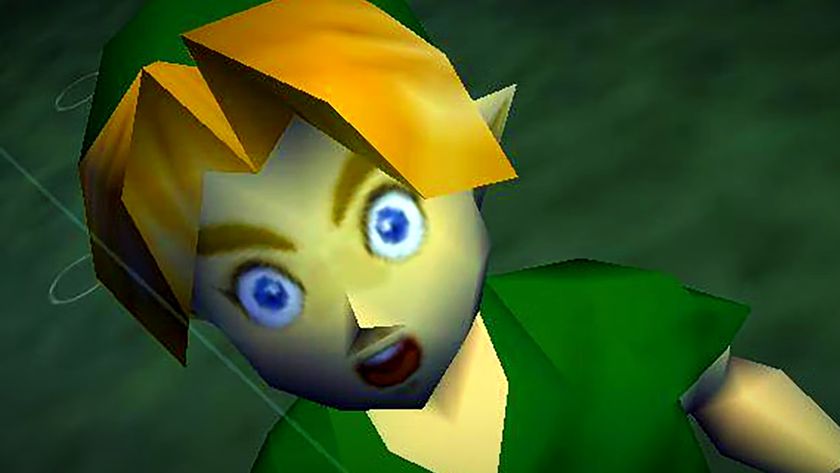12 dead characters that deserve new life
It’s like Babe Ruth’s ghost told that kid in The Sandlot: heroes live forever, legends never die, and no video game character can disappear forever. Okay, okay. That’s not the exact quote but the maxim holds true. Great characters, like legends, never truly fade away. They stick in our hearts and memories, elevating even mediocre games long after you’ve played them due to how expertly they were designed, how they moved, how they helped us imagine an impossible place. When we bring them back, we can make all new games with them rather than sequels. Donkey Kong disappears for nearly 15 years without getting his own game and then, boom, we get Donkey Kong Country. These characters, long absent and underserved, are perfectly suited for resurrection.
Nariko – Heavenly Sword
In fairness, Nariko has popped up a couple of times since Heavenly Sword back in 2007. She was one of the combatants in the largely ignored PlayStation All-Stars Battle Royale and starred in a truly awful direct-to-DVD animated adaptation of the original game. Forget those missteps: this woman deserves her own game. In fact, Nariko was single-handedly the best part of Heavenly Sword, a three-dimensional brawling game whose brawling felt limp at best. Her journey as a constantly patronized warrior who sacrificed her body and soul to save her community from a mad tyrant, was so engrossing it made it worth trudging through the terrible combat. The titular sword transformed Nariko into something more than human by the end of the original, meaning a new adventure could find Nariko doing more than just fighting anonymous thugs with a big blade. A story about reclaiming her humanity would be something special.

Kyle Hyde – Hotel Dusk: Room 215
Hotel Dusk: Room 215 was an unexpected hit on Nintendo DS. A slow-paced visual novel with gimmicky puzzle solving, people fell in love with its “Take On Me” art style and noir story. The real secret to Hotel Dusk’s success, though, was Kyle Hyde. Never the hardboiled badass detective you expect, Kyle is the ex-cop with demons who’s genuinely a good person. He hasn’t “seen too much” or “gotten too old for this shit.” He’s a guy as complicated and haunted as anyone else and playing through the game’s mystery helps him grow. Developer CING realized they had a good thing and made another Hyde vehicle called Last Window that dove even deeper into his neuroses. Sadly the studio closed leaving the character in the hands of Nintendo, so there's little chance of a third Kyle Hyde story. Still, he’s too good to waste. Let’s get an NX open world detective game going, Nintendo. Come on.

Samanosuke – Onimusha
Onimusha was a big deal for Capcom last decade. The samurai pulp schlock-meets-Resident Evil series blended swift sword play, absurd demons, puzzle-ridden castles and dungeons to great effect. There were four entries on PS2 and two spinoffs all in the span of five years. Samanosuke Akechi tied the series together. The essential lone warrior action hero, Samanosuke was both a perfect vessel for players to project themselves into and a grand personality thanks to the performance capture of actor Takeshi Kaneshiro. The combat and exploration of Onimusha has aged significantly these past ten years, but Samanosuke would be an amazing character for a massive, exploration-based action game from Capcom. Just watch the intro for Onimusha 3, when he takes on an entire crazy demon jellyfish dragon armada; the moves, the attitude are totally distinct, utterly Samanosuke, but he’s still quiet and mysterious enough for us to project into. He was one of the faces of the publisher’s last true creative boom, making him an ideal character to reignite its inner fires.

Cate Archer – No One Lives Forever
Cate Archer’s absence from the video game landscape these past fourteen years is keenly felt. Monolith Productions, her creator, made great games like FEAR and Shadow or Mordor since it stopped making No One Lives Forever first-person shooters, but none of its characters have even been as downright cool as Cate Archer. The cat burglar-cum-secret agent is everything you want out of a modern day spy hero: cool, funny, droll, and damn good at what she does. She’s never as broody (or as much of a prick) as James Bond, but she’s also not as callous or reckless as Sterling Archer. Monolith already toyed with spinoffs of the series with Contract J.A.C.K. in 2003, but Cate deserves her own game, something with the sort of subtle intrigue and world-hopping adventure appropriate for a character of her class and style.

Musashi – Brave Fencer Musashi
Given Square-Enix's penchant for sulky melodrama, a bulbous comedic hero probably doesn’t seem like a likely lead for one of the publisher’s games. Once upon a time, though, Square’s developers were capable of making some legitimately funny and warm games. Brave Fencer Musashi was chief among them, and Musashi himself was the star. The teensy warrior was like a cross between Miyamoto Musashi, the very real samurai who inspired him, and Calvin from Calvin & Hobbes. An unusual combination? Certainly, but one that made for a supremely personable game that was more charming than it was fun to play. Rather than a sprawling console action RPG like his first outing, Musashi is a perfect character for a straight action game. It could even resurrect his ability to use two swords, one for attacking and one for absorbing enemy powers. Just imagine a Nintendo 3DS platformer with that little dude.

Nikki & Fargus – Pandemonium
Long before it flooded homes with plastic Skylanders toys, Toys for Bob made one of the world’s first polygonal platformers. Pandemonium appeared on almost every game playing machine under the sun between 1996 and the earlier ‘00s, from the PlayStation to Nokia’s poor doomed Ngage, and no version of it was particularly good. The jumping lacked the precise feel that makes for a great platformer. Its heroes Nikki the magician and Fargus the jester were instantly likable characters, though, their simple, colorful design making them stand far out amidst the gun-toting dudebros, sword-bearing fantasy archetypes and animal mascots that ruled the era (and most of today.) Rather than give those characters room to grow in a more expansive sequel, Pandemonium 2 came out in 1997 and gave the duo a stereotypically EXTREME makeover for the ‘90s and they were never heard from again. These two should have been the stars of an adventure game from the start, wandering their vaguely medieval world, accidentally casting mischievous spells on unsuspecting villagers, and generally living in a place as colorfully wrought as they were.
Sign up to the 12DOVE Newsletter
Weekly digests, tales from the communities you love, and more

Mike – StarTropics
StarTropics was weird as hell when it came out in 1990. While superficially similar to Zelda thanks to its mix of puzzles, dungeons, and exploration, its premise distinguished it from all other imitators. As deeply surreal as Super Mario Bros but set in a recognizably real world, StarTropics sent a mostly normal teenager into a tropical archipelago full of sea serpents, ghosts, friendly robots, militant feminists and space aliens. It was awesome, and so was its equally weird sequel that sent Mike through time to meet figures like Cleopatra and Leonardo DaVinci. Part of why it never quite took off, though, is that its action RPG play was stiff and unforgiving, a stark contrast to Mike himself. He’s the perfect straight man, the ideal milquetoast doof to drop in wild scenarios, but distinctive thanks to his move set. The guy fights octopuses with a yo yo. He resists alien brainwashing by stuffing bananas in his ears. But he still just wants to play baseball at the end of the day. Spice up the NX launch line up with some new-old blood, Nintendo, and give Mike an Ocarina of Time style makeover.

Robbit – Jumping Flash
When new technology comes along, no game maker knows quite what the hell to do with it. After Tomb Raider and Super Mario 64 came along, everyone had an idea of how to do 3D platformers. Before that, not so much. Jumping Flash was an early attempt at figuring it out, and Robbit was the freaky adorable character that brought Sony’s experiment to life. While the game itself sported mostly simple and messy environments full of blobby trees and barely defined structures, Robbit himself was awesome. Who doesn’t love a robot bunny with enormous red eyes that can jump twenty stories straight into the sky? Jumping Flash’s protozoic approach to platforming was dated within a year of release but today Sony has a piece of new technology ideally suited to the little trailblazer. Robbit needs his own PSVR game, putting you in the rabbit’s POV in some crazy world where you have to jump super, super high. It’s perfect.

Blackthorne – Blackthorne
Overwatch wouldn’t have seemed so strange coming from Blizzard back in the day. Before the 21st century, there was more to the kingdom of Battle.net than an endless tide of variations on Warcraft, Starcraft, and Diablo. They made all kinds of games, even weird schlock like Blackthorne. Like Oddworld: Abe’s Odyssey filtered through early ‘80s movies, Blackthorne was a bizarre adventure platformer with slow, steady exploration in a vast nightmare factory world where green ogres imprison lost souls. Blackthorne himself was pure grindhouse hero, a long-haired meathead in tight black jeans and a leather vest, blowing up bad guys with one-handed shotgun shots. He’s little more than a brute archetype, but the way he was animated made him pop off the screen. Word in 2013 was that he’d make it into Heroes of the Storm, but it never came to be. He’s really more of an Overwatch character at heart, though. Make it happen, Blizzard.

Kaim – Lost Odyssey
While it was intended to be the Xbox’s own signature role-playing series, Mistwalker’s Lost Odyssey ended up as more of an acquired taste even among RPG fanatics. Its story about immortals wandering the land fighting mythic beasts while undergoing perpetual loss in a world of regular old humans was often beautiful, but it was a chore to play. Interminably long and frequent battles made it hard to enjoy Kaim, the game’s withdrawn hero, which was a shame because he’s fascinating. Some of Lost Odyssey’s best moments were just text stories, passages retelling events from Kaim’s 1000 year lifespan. That’s a huge window of time to explore with a character whose very nature makes him malleable. Give me an action game where Kaim was a sailor for a few decades, or that period when he started a family and had to fend off bandits as a farmer. Lost Odyssey didn’t work, but Kaim still could.

Missile – Ghost Trick
Were the world a just place, Ghost Trick would have been a runaway success just like Ace Attorney, Shu Takumi’s previous original series. His story about a spirit trying to solve its own murder while trying to save others from an equally grisly fate was just as full of mind-tweaking puzzles, addictive story, and characters that were both equally absurd and deeply lovable. Missile, a super pumped pomeranian, is the embodiment of what makes Ghost Trick so wonderfully distinct. He comes off at first like a one-dimensional joke character, a dog whose excited barks are written out like he’s people. “I HATE THOSE RED THINGS! WELCOME! IT’S MISSILE!” As the game goes on and it’s revealed that Missile loves his family so much that he’s continued on as a poltergeist to protect them, he takes on greater dimension. Can a ghost dog psyched about everything carry his own game? Hell yes. Give him a platformer. Give him a dating game. Missile is so good he’ll work anywhere.

Hana – Fear Effect
NOTE: During the production of this feature, Square-Enix actually announced a brand new Fear Effect title, the first in fifteen years. Color us pleasantly surprised.
More people remember Fear Effect’s truly vile advertisements more than they remember the actual games. Anyone who played Fear Effect: Retro Helix, the only sequel the survival horror action series ever got, would have found a game with equally troubling overtones. Before the series went down the misogyny rabbit hole, though, it had something notable in its hero Hana. Her arc in the first game, of a stereotypical hardass mercenary confronting both real demons and the spiritual ones haunting her past, showed real promise for the series going forward. Hana was complex, as an action star, as a person, and as a human character with an actual sexual identity, something that’s still a rarity in gaming. Fear Effect ran its course, but Hana is a perfect hero for a number of Square-Enix’s studios who hold those intellectual property rights. Crystal Dynamics has done wonders for Lara Croft in the ‘10s. Maybe they could do the same for Hana.













Death Stranding 2 pre-orders are estimated to go live this month, and will reportedly include a $230 collector's edition that I pray doesn't come with another creepy baby statue

Playing Atomfall for 90 minutes booted me out of my comfort zone more than any other survival action game, and that's a very good thing




